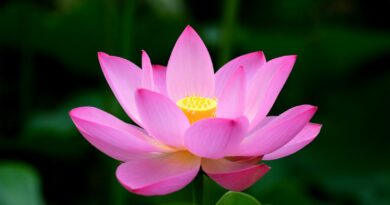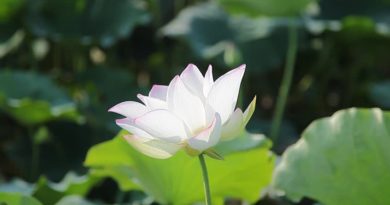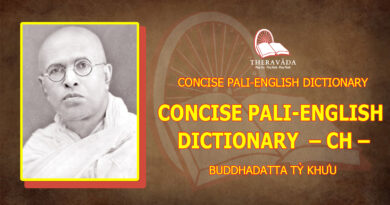A FISTFUL OF SAND – THE SKILLFUL HEART
A FISTFUL OF SAND
THE SKILLFUL HEART
We’ve all come here through a sense of conviction, intent on studying and practicing the Dhamma that will bring happiness and fulfillment to our hearts. We should understand that the Dhamma taught by the Lord Buddha doesn’t lie anywhere far away. As the Canon says, skillful and unskillful dhammas arise right here in the heart. If we want to study the Dhamma, we have to study our own heart. When we’re well acquainted with the heart, we’ll be well acquainted with the Dhamma. When we’re well acquainted with the Dhamma, we’ll be well acquainted with the heart.
There are times when the heart is in bad shape. Bad mental qualities get mixed up with it, making it even worse, making us suffer both in body and mind. These bad mental qualities are said to be “unskillful” (akusala). The Buddha teaches us to study these qualities so that we can abandon them.
There are other times when the heart is in good shape: at ease with a sense of well being. We feel at ease whether we’re sitting or lying down, whether we’re alone or associating with our friends and relatives. When the heart gains a sense of ease in this way, it’s said to be staying with the Dhamma. In other words, skillful (kusala) mental qualities have appeared in the heart. The skillful heart is what gives us happiness. This is why the Buddha taught us to develop these skillful qualities, to give rise to them within ourselves.
If you were to list these skillful qualities, there would be lots of them. But even though there are lots of them, they all arise in our one heart. So if we want to know and see the Dhamma, we have to develop mindfulness and alertness, keeping watch over our heart. If the heart isn’t at peace, if it’s distracted and turbulent, we should realize that, at that moment, the heart is out of shape. Unskillful qualities have arisen within it. So we should try to be mindful and alert to put it back into good shape. We have to keep watch over the heart to see whether, at this moment in time, it’s in good or bad shape.
If we see that the heart isn’t yet in satisfactory shape, we should let go of our unskillful preoccupations and make ourselves mindful of what’s good. We want to be happy, so we don’t want the things that will make us suffer. We should try to put the mind into good shape, convinced in the practice of the Dhamma that will develop our mindfulness. We have to look after the heart so that it’s confident and content in our practice. We should remind ourselves that in following this practice we’re following in line with the Buddha: one who knows, who sees, an arahant free from defilement, released from suffering in the cycle of death and rebirth. The fact that we’re practicing in line with the Dhamma taught by the Buddha means that we’re studying in an institution of highest learning, with the Buddha as our foremost teacher.
So be mindful to keep your heart in good shape. Be mindful of your meditation word, buddho. Or if you want, you can focus on the in-and-out breath. When the breath comes in, keep your mind at ease. When it goes out, keep your mind at ease. Don’t be tense, don’t force things, don’t get caught up in any desire to know or see beyond reasonable bounds. If we give rise to this kind of desire, this kind of defilement, it’ll distract the heart. So we should be careful to be mindful, to look after the mind, to meditate well. Simply be mindful of the breath. When the breath comes in, let it come in with ease. When it goes out, let it go out with ease. Let the mind be at ease, too. If anything comes along to disturb you, don’t get involved with it. Just keep that sense of ease going. If your mindfulness can keep maintaining your sense of contentment, your sense of confidence in the practice, the mind will separate from its outside preoccupations and gather into a sense of stillness. There will be a sense of lightness. Comfort. A feeling of contentment with that comfort.
If it so happens that while we’re trying to maintain that sense of ease in the heart, disturbances come in to interfere, making the mind distracted and restless, we should remember that we don’t have to look for that lost sense of ease anywhere else. Remember: wherever there’s restlessness is where there is stillness. We have to be alert to the preoccupations that have put the mind out of shape: we don’t want them, so we shouldn’t pay them any attention. We should try to remember the good preoccupations that have given us a sense of peace and calm in the past. When we can put the mind at ease in this way, the things disturbing that ease will disappear right there, right where the bad preoccupation was. This is like darkness: no matter how long the darkness has reigned, when we realize that it’s darkness and that we want light, we don’t have to look anywhere else. If we have a lantern, then as soon as we’ve lit it, light will appear right where there was darkness before. We don’t have to look anywhere else. The darkness will disappear right there where there’s light. In the same way, when the mind isn’t at peace, we don’t have to look for peace anywhere else. Restlessness comes from an unskillful preoccupation; peace comes from a skillful preoccupation right in the same place.
When we’ve developed a good preoccupation that puts the mind at peace, we should look after it and maintain it well. As long as this sort of preoccupation is in charge of the heart, the heart will maintain its sense of ease. So we don’t have to look for goodness anywhere else, for that would simply distract and deceive the heart. We have to keep looking at our own heart, to see if it’s in good shape yet or not. Everyone has a heart, and every heart has skillful and unskillful qualities. So use the quality of dhamma-vicaya, your powers of discriminating analysis, to observe the heart, this sense of awareness right here within yourself.
While you’re sitting here listening, focus your attention exclusively on your own heart. The sound of the talk will come into the heart of its own accord. You don’t have to focus your attention outside on the sound, or to analyze what’s being said. Establish your mindfulness right at the heart. When the person speaking mentions this or that quality, the awareness of that quality will arise right in your own heart. If it doesn’t arise immediately, then give rise to it. Say, for example, that the mind is in bad shape. When the person speaking mentions goodness, try to give rise to a good mood within the heart. Make yourself confident, content in the practice. Arouse your efforts to give rise to knowledge of things you’ve never before known, to attain things you’ve never before attained, to see the subtle things you’ve never before seen, step by step within your own mind.
During his lifetime, the Buddha taught the Dhamma fully knowing the capabilities of his listeners, aware of the level of their intelligence and potential, and of which aspect of the Dhamma they’d understand most easily. He then would teach them that Dhamma. As for his listeners, they would focus their attention on their own hearts and minds, and would understand in line with the practices they had done in the past. When the corresponding qualities appeared in their own hearts, they were able to know in line with the truth appearing within them. When the Dhamma appeared in their hearts, they experienced peace and calm, or gained an understanding into the truths that the Buddha taught. For example, when he taught about stress and suffering, his listeners focused on the stress and suffering in their own hearts. They tried to understand to the point where they saw that things couldn’t be otherwise than what the Buddha taught. They really saw suffering and stress. When the Buddha taught that the flaw called the origination of stress should be abandoned, they saw the suffering that comes from craving. They saw how these things are always related. Whenever craving arises, suffering always follows in its wake.
As a result, they made an effort totally to abandon the origination of stress. The more they were able to abandon craving, the weaker their suffering grew. When they were able to cut craving totally away, suffering and stress totally disappeared. They then knew clearly in line with the truth. The state of their minds didn’t deteriorate or fall away, because they had entered into the truth. They had listened to the Dhamma and focused on their own minds in the proper way, so that they could see the basic principles of the truth with their own mindfulness and discernment.
As for those whose mental faculties weren’t yet fully strong, who had developed their faculties only to a moderate level, even though they didn’t reach the Dhamma while they were sitting there listening to it, the Buddha taught the noble eightfold path for them to put into practice. This enabled them to gain knowledge and understanding step by step, to the point where their mindfulness and discernment were strong enough to bring them to the Dhamma at a later point, in line with the merit and potential they had developed on their own.
As for us: even though we may not reach the Dhamma while listening to it, the Buddha laid down the path to the cessation of stress for us to develop by putting it into practice. This path is nothing other than the noble path: right view, right resolve, right speech, right activity, right livelihood, right effort, right mindfulness, and right concentration. Having taught about the right path that we should develop, he also taught about the wrong path that should be avoided. In other words, he taught us:
to abandon wrong view and to develop right view;
to abandon wrong resolve and to develop right resolve;
to abandon wrong speech and to develop right speech;
to abandon wrong activity and to develop right activity;
to abandon wrong livelihood and to develop right livelihood;
to abandon wrong effort and to develop right effort;
to abandon wrong mindfulness and to develop right mindfulness;
to abandon wrong concentration and to develop right concentration.
For this reason, we should acquaint ourselves with both the right path and the wrong path. What sort of view ranks as the wrong view we should abandon? Wrong view starts with views about the body, or physical form in general. If we view physical form in line with what the Buddha taught — that rupam aniccam, physical form is inconstant; rupam dukkham, physical form is stressful; rupam anatta, physical form is not-self — that’s called right view. But if we see physical form as constant — or try to make it constant — that’s wrong view, and runs counter to the Buddha’s teachings. In other words, if we see that rupam niccam, physical form is constant; rupam sukham, physical form — the body — is easeful; rupam atta, physical form is our self or really our own, that’s wrong view.
If we really look at the body in line with its truth, we’ll see that it really is inconstant. From the moment it’s born we can easily see the changes it undergoes. It ages and wears down every day. This inconstancy is why we have to keep struggling under the desire to make it constant and lasting. The nature of the body is that it’s always lacking one thing or another — like a water tank that’s continually leaking: we have to keep adding water to it to keep it from running dry; if we forget to add water, it’ll dry out for sure. In the same way, the body is genuinely inconstant, genuinely stressful. If it were constant, we wouldn’t have to struggle, we wouldn’t have to keep looking for things to keep it going; we wouldn’t have to work. The reason we work for money is so that we can nourish this body, which is continually wasting away. The Buddha saw clearly that this work and struggle is stressful, that it’s intimately tied up with the inconstancy of the body. Wherever there’s inconstancy, there’s stress. And because of that stressfulness, it’s inconstant. These qualities are dependent on each other.
When we’ve contemplated so that we see this truth, then we see the Dhamma. We have right view. The more the mind understands stress and suffering, the more it can grow still and let down its burdens. Its greed will decrease. Its anger will decrease. Its delusion about physical form will decrease. Its burdens will decrease. This will make it brighter and more peaceful: a skillful mental state arising in such a way that we can see it clearly when we contemplate the events appearing in the mind in line with their truth.
When the Buddha explained right view, he started with stress and suffering: jatipi dukkha — birth is stressful; jarapi dukkha — aging is stressful; maranampi dukkham — death is stressful. These are truths found within each and every one of us — every person, every living being. Whether or not we study the matter, this is the way things are in actuality, ever since who knows when. For hundreds and thousands of years in the past, wherever there has been birth, there has had to be aging, illness, and death in its wake. The same thing is true in the present and even on into the future: every person who takes birth will have to meet with these things. This teaching is the genuine truth. It will never change into anything else. No matter how many hundreds or thousands of people will be born, they will all have to meet with illness, will all have to age, will all have to die, each and every one of them. Not one of them will remain. No matter what knowledge they attain, what weapons they invent, they won’t be able to win out over this genuine truth. So once we’ve developed right view in this way, we have to eliminate our defilements — in other words, our intoxication with our youth, our intoxication with being free from disease, our intoxication with being alive. We’ll then be able to behave in a way that will be to our own true benefit as long as we are still alive.
As we develop mindfulness in contemplating the body in and of itself, seeing its true nature and developing right view, our heart will get more and more convinced of this reality, and will grow farther and farther away from wrong view. We’ll be able to develop right view more continually. This is the path that will lead us to attain the Dhamma, the ultimate peace.
As we develop right view, then right resolve will be no problem, because our resolve to meditate so as to develop right view is, in and of itself, right resolve: the resolve to see the Dhamma, to know the Dhamma, in line with the truth that appears in our own body, beginning with the truth of stress and suffering. Our body is composed of birth: As soon as there’s birth, there has to be suffering. We suffer because of birth. Hunger, desire, intense heat and cold: all of these things come from birth. And no matter how carefully and adequately we look after the body, it has to keep on aging and wasting away. No matter how much we plead with it, it won’t listen to us. It just keeps on aging. And on top of that, it has all kinds of diseases. If you really look at the body, you’ll see that diseases can arise at any time at all. It’s a home for diseases. It has eyes, and so there are eye diseases. It has ears, and so there are ear diseases. It has a nose, and so there are nose diseases. It has a tongue, and so there are tongue diseases. Diseases can arise in each and every one of its parts. This is a genuine truth — which is why there are doctors and hospitals in every country. All people of all races have to depend on medicine. Even the person telling you this has diseases, just like everyone else. When we look to really see the truth, we’ll see that the Buddha’s teachings aren’t in the least bit mistaken: they’re right here in each and every one of us.
If we develop our minds properly in line with the truth so that its views are right, our restlessness and distraction will grow calm. We’ll see that the greed we’ve felt in the past has served no real purpose. When anger arises toward other people, we’ll see that it serves no real purpose, that it’s nothing but stress and suffering. We’ll see that our only way out is to make the mind still: this is the way to true happiness. We’ll gain disenchantment, seeing — given the true nature of the things — that what we’ve busied ourselves with has served us no real purpose. It’s tired us out to no real purpose, created difficulties to no real purpose, and has left us with nothing at all that we can truly call our own. Think about all the things you’ve sought and amassed from your birth up to the present moment: is there anything there that you can really depend on? Anything you can really call your own? Nothing at all. None of those things can really help you. They may help you a bit, but not enough to give you any real happiness.
So I ask that you all work at developing right view. Meditate on the four frames of reference (satipatthana) so as to develop discernment. As you meditate — sitting, standing, walking, and lying down — stay mindful of the body, which is filled with inconstancy. No matter where you look, it’s inconstant. It’s also full of stress. Wherever you look, you see that diseases and pains can arise at any time. It can age at any time. There’s no part of it that’s totally free of aches and pains. If you don’t believe me, take a sharp spike and stab any part of the body, and you’ll see that it hurts wherever you stab. You can see clearly in line with the truth that the whole body is stressful. As for buddho, the awareness in the mind, it’ll be aware that what’s really important is not the body: it’s the mind. When you see the drawbacks and stresses of the body, then discernment, clarity, and calm will arise in the heart, freeing it from its burdens and karma debts related to the body. In this way we let go of our heavy burden: nicchato parinibbuto, free from hunger, unbound, reaching a bliss and peace that is lasting.
So I ask all of you — who have conviction, who want peace, who want happiness in your day-to-day life — to develop mindfulness, to develop right view. Look at the body in and of itself. The body in and of itself is mentioned in the Great Frames of Reference Discourse (Mahasatipatthana Sutta), but it’s not in the words. It’s not there in the book. It’s right here. When we practice, we don’t have to recite the words. We look right at our own body, at what’s already here. Mindfulness is something we already have; all we need to do is apply it to the body. If we’re not mindful of the body, then it’s not right mindfulness. When we’re mindful of the body, there’s our mindfulness: the mindfulness that will enable us to practice, that will enable us to know. If we keep observing the body, we’re sure to see what’s here.
The more we observe, the more proficient we’ll become. We’ll understand clearly and correctly. The more clearly we see, the more effort — right effort — we’ll put into knowing and seeing even more fully. Right mindfulness will be more continually mindful; and right concentration, more firmly established. Right speech and right activity will follow in their wake. So develop right view in your hearts by developing the frames of reference. Keep track of the body in and of itself, train in line with the truth, by day and by night, whether you’re sitting, standing, walking, or lying down. When you practice correctly, no one with any true wisdom will be able to take issue with you, for you’re focused on the genuine truth: the inconstancy, the stress and suffering, all four of the four noble truths that can be seen right here in this body. These things can’t be seen anywhere else. If we really develop right view with regard to these things, results will arise within us. When results arise, the nature of the mind is that it will know on its own. It won’t have to be told. All that’s necessary is that you practice rightly. Begin trying from this moment on. Don’t get distracted by this person saying that or that person saying this. There’s nowhere else you have to look. The evidence is your own body. How inconstant it is, you’ll know for yourself. It won’t lie to you. How stressful it is — how many diseases, aches, and pains — you’ll know for yourself. It won’t lie to you. The truth is always there for you to see.
Practicing to see in line with the truth in this way is called seeing the Dhamma, the nature of reality in and of itself. We’ll come to see the truth all the way through and gain release from suffering and stress. So keep at it. When you gain any understandings of any sort, we can discuss them as they arise, step by step, until you gain genuine release from suffering and stress. But this will be enough for now.









